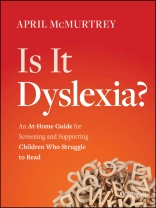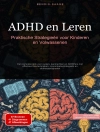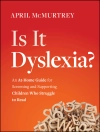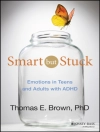Hands-on resources for screening readers of all ages for dyslexia
In Is It Dyslexia?, certified dyslexia assessment specialist April Mc Murtrey delivers an accessible, hands-on framework for screening readers of various ages for dyslexia.. The book offers comprehensive, clear, and step-by-step processes you can apply immediately to confidently and accurately screen readersfor dyslexia. The author shares the tools and strategies used by professional screeners, as well as first, next, and final steps you can take as you move forward with your screening results.
The book includes:
- Explanations of what dyslexia is, as well as an overview of common talents and strengths often found in readers with dyslexia
- A collection of recommended accommodations for students with dyslexia in the home and school and effective literacy instruction for students with dyslexia
- A comprehensive dyslexia questionnaire, eleven different screening tests, and step-by-step instructions for administering them
Ideal for tutors, homeschool teachers, parents, instructional coaches, counselors, and speech-language therapists, Is It Dyslexia? comes complete with reproducibles and links to video tutorials required for screening students of various ages.
İçerik tablosu
About the Author vii
Introduction ix
Part I Understanding Dyslexia 1
1 Recognizing the Signs of Dyslexia 3
Michael’s Story 3
Signs of Dyslexia 12
Summary 23
2 Unraveling Misinformation about Dyslexia 25
John’s Story 25
Myths about Dyslexia 28
Summary 32
3 Embracing Dyslexia 33
Emma’s Story 33
Systematic, Synthetic, Explicit Code-Based Instruction 35
Summary 36
4 What to Do If You Suspect Dyslexia 37
Your Story 37
Summary 38
Part II Screening for Dyslexia 39
5 Understanding the Dyslexia Screening Process 41
Introduction to the Screening Process 41
Dyslexia Screening Q&A 42
Summary 44
6 Instructions for the Dyslexia Screening 45
Prepare for the Screening 45
Administer the Screening Tasks 47
Evaluate the Results 48
Summary 48
7 Dyslexia Screening Packets 51
Kindergarten Screening Packet 52
Grade 1 Screening Packet 60
Grade 2 Screening Packet 88
Grade 3 Screening Packet 117
Grade 4 Screening Packet 147
Grade 5 Screening Packet 178
Grade 6 Screening Packet 209
Grade 7 to Adult Screening Packet 240
Part III Moving Forward with Dyslexia 271
8 Taking 7 Steps after Screening 273
Step 1: Talk to Your Student 273
Step 2: Celebrate! 274
Step 3: Evaluate Your Current Reading Program 274
Step 4: Study the Effective Literacy Instruction and Recommendations in the Following Pages 275
Step 5: Talk to Your Child’s Teacher 275
Step 6: Read at Home 275
Step 7: Educate Yourself Further on the Topic of Dyslexia 276
Summary 276
9 Effective Literacy Instruction for Students with Dyslexia 277
Phonological Awareness 278
Phonemic Awareness 278
Knowledge of the Correct Sounds of Each Grapheme, Especially Vowels 279
Proper Teaching of Phonetically Irregular Words 279
Phonics Instruction 281
The Importance of Connected and Controlled Text 282
Fluency Development 283
Vocabulary Development 284
Comprehension Development 285
Summary 286
10 Recommendations for School and Home 287
Recommendations for School 287
Recommendations for Home 288
Summary 290
Index 291
Yazar hakkında
April Mc Murtrey is the developer of the Learn Reading program, a reading curriculum designed for struggling and dyslexic learners. As a professional reading and dyslexia specialist, April has helped thousands of students break through their reading barriers and unlock the world of words. Her desire is for struggling readers of all ages to have access to quality reading instruction that will change lives and strengthen generations.











